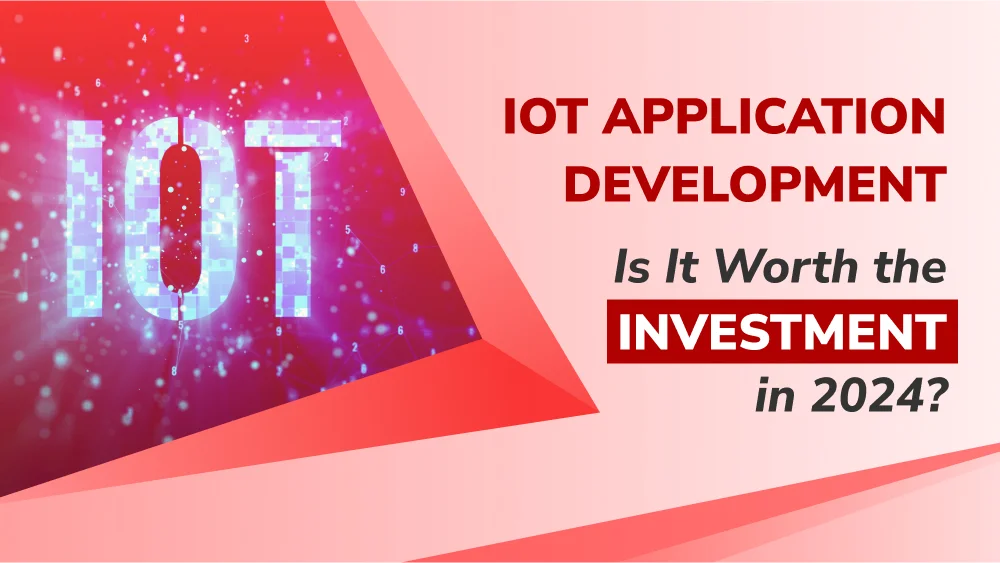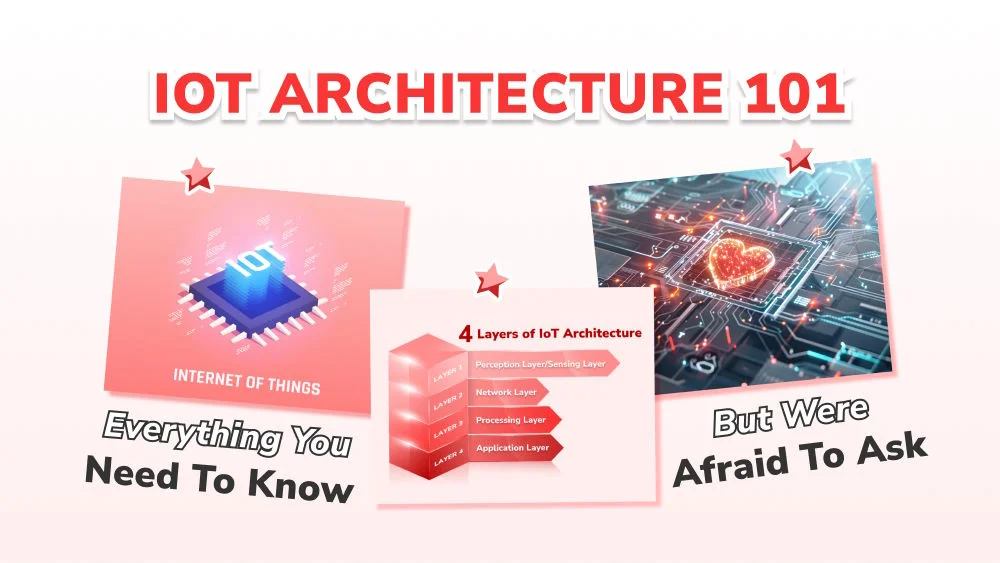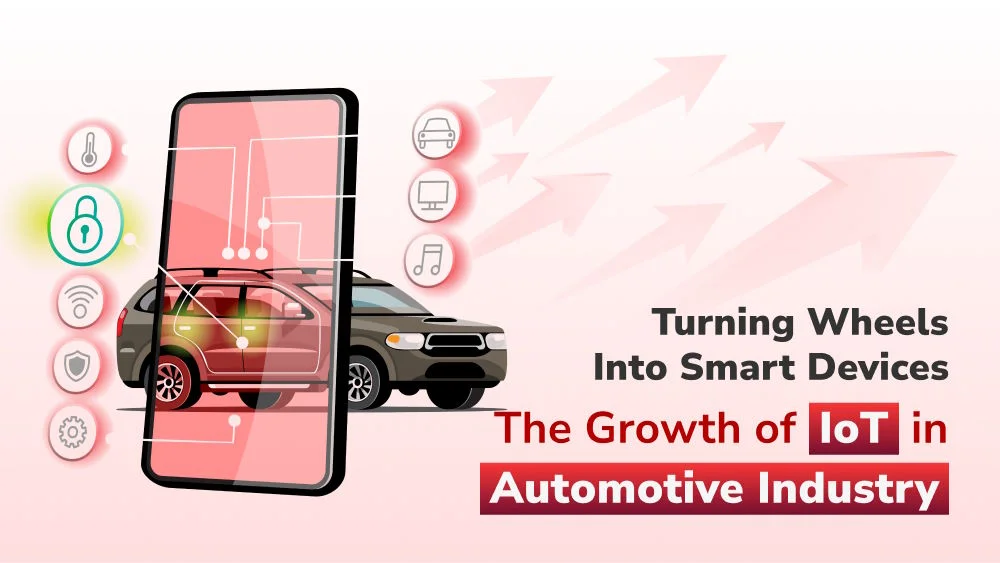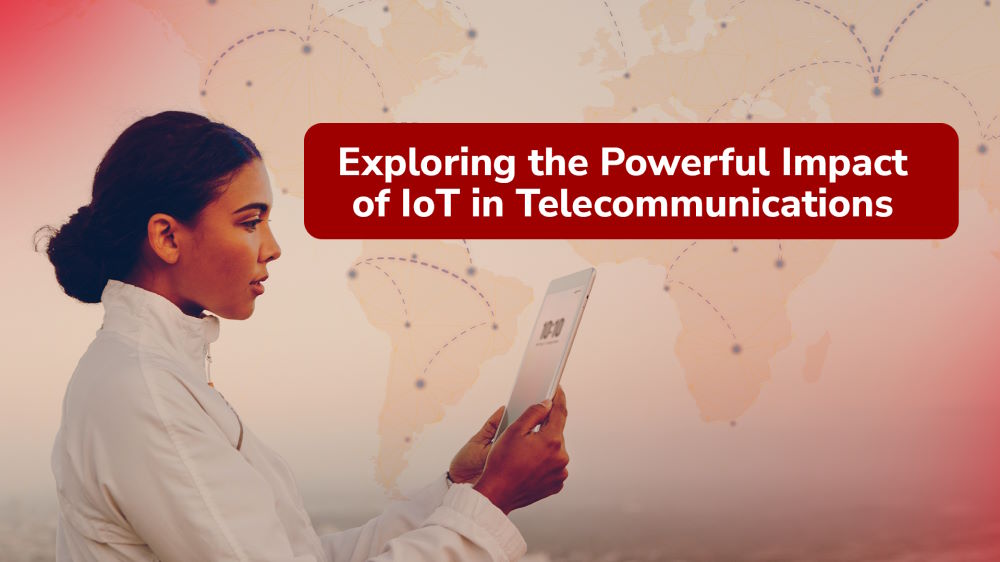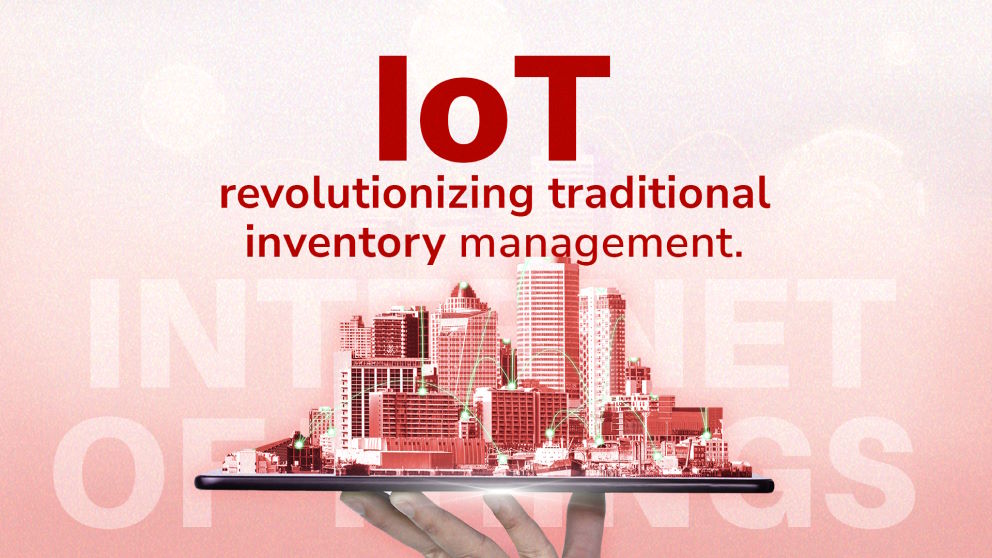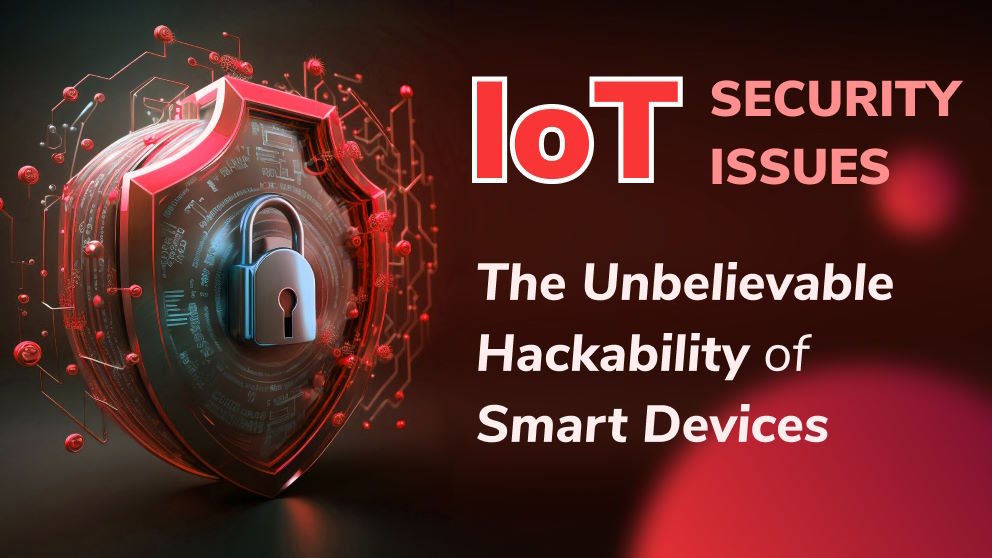What Is IoT Data Analytics? - How It Benefits Your Business
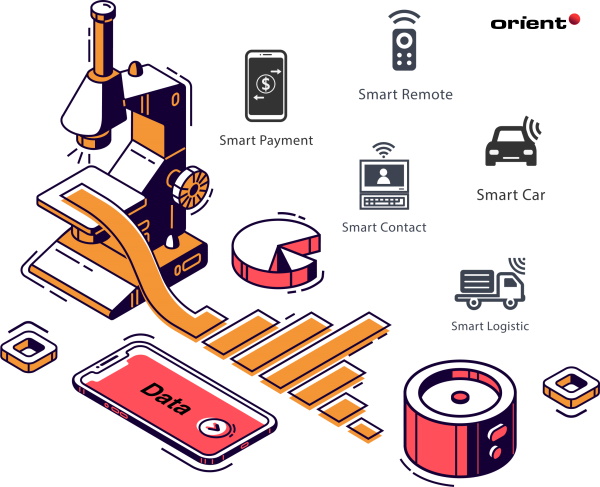
Content Map
More chaptersOfficially coined in 1999 by Kevin Ashton, the concept of the Internet of Things has been through over two decades of progression until it eventually accelerates as an inevitable part of modern daily life as well as business operation and other industry sectors with a wide range of IoT applications nowadays. The disruption of IoT adoption has no sign of slowing down its pace anytime soon with the constant evolution of technologies, and the market for the Internet of Things is projected to peak at 14.4 billion active connected devices by 2022, which is 18% higher than the previous year. It does not stop there; the growth is expected to go on, and by 2025, the total number of connected IoT devices is estimated to be around 27 billion. And guess what? In such a data-driven world as today, any raw data can drive value. Therefore, the massive amount of IoT data probably brings in value if it is captured, processed, and analyzed properly. Otherwise, it will end up wasted without data analytics. That is how IoT data analytics shows up, enters, and changes the game.
A Comprehensive Introduction to IoT Data Analytics
How Do We Define IoT Analytics?
What is IoT data analytics? As its name suggests, Internet of Things (IoT) data analytics, or simply IoT analytics is the act of analyzing data generated and collected from IoT devices by utilizing a specific set of data analytics tools and techniques. The true idea behind IoT data analytics is to turn vast quantities of unstructured data from various devices and sensors within the Internet of Things ecosystem, which is heterogeneous, into valuable and actionable insights for driving sound business decision-making and further data analysis. Furthermore, IoT analytics enables identifying the patterns in data sets, including both current states and historical data, which can be utilized to make predictions and adjustments about future events.
There is no doubt that the deployment of connected devices and sensors has increased exponentially in various industries in recent years, which has driven the development of IoT data analytics to a great extent. IoT analytics is being widely used in various industries ranging from healthcare, retail, and eCommerce to manufacturing, transportation, and more.
Different Types of IoT Data Analytics
As IoT analytics are performed to gather insights that serve different purposes, it can be broken down into four primary types:
Descriptive Analytics
Descriptive IoT analytics mainly focus on what happened in the past. The historical data collected from devices are processed and analyzed to generate a report that describes what took place, when it occurred, and how often it did. This type of IoT analysis is useful for providing answers to specific questions about the behavior of things or people and can also be used to detect any anomalies.
Diagnostic Analytics
Different from descriptive IoT analytics, diagnostic analytics go one step further to answer the question of why something happened by drilling down into the data to identify the root cause of a specific issue. Diagnostic analytics make use of techniques like data mining and statistical analysis to uncover hidden patterns and relationships in data that can offer actionable insights into the causes of specific problems.
Predictive Analytics
As its name suggests, predictive IoT analytics is used to predict future events by analyzing historical data and trends. This type of analytics makes use of various statistical and machine learning algorithms to build models that can be used for making predictions about future events. This type of analytics plays a significant role in supporting business decisions related to inventory management, demand forecasting, etc.
Prescriptive Analytics
Prescriptive IoT analytics is the most advanced type of IoT analytics that not only predicts what will happen in the future but also provides recommendations on what should be done to achieve the desired business outcomes. This type of analytics makes use of optimization algorithms to identify the best course of action that should be taken to achieve a specific goal.
The Relation Between IoT and Big Data Analytics and IIoT
Speaking of massive amounts of data, you are being reminded of big data analytics, aren’t you? Do they have any sort of connections? Actually, people often find IoT and big data analytics confused by each other. The only distinction between them is the data source; while big data analytics deals with data sets from a broad range of streams and sources, IoT analytics only collect and analyze data generated by connected IoT devices and sensors. So, we can say that IoT data analytics is a subset of big data analytics that helps make sense of data originating from connected devices in the ecosystem of the Internet of Things. And as a result, IoT analytics can be used to solve various issues and problems that cannot be addressed by big data analytics alone, such as real-time streaming data analysis, near-time processing, edge computing, predictive maintenance, etc. Therefore, the combination of IoT and big data analytics can be used to gain a competitive edge and drive business value.
Have you ever heard of the term IIoT? Or it is also known as Industrial IoT. It is an application of IoT technologies in the manufacturing and other industrial sectors with the aim of achieving better operational efficiency as well as improving safety while reducing downtime and production costs. IIoT data analytics, which is a branch of IoT analytics, is used to process and analyze data generated by IIoT devices and sensors to deliver valuable insights for optimizing industrial processes, maintenance scheduling, and logistics management on manufacturing equipment, pipelines, weather stations, smart meters, delivery trucks and other types of machines.
The IIoT applications are not only limited to the manufacturing sector. In fact, the future of IIoT is booming; they can be seen in many other fields such as healthcare, retail, transportation, energy, and so on.
Why Need IoT Analytics?
From its humble beginnings, IoT data analytics has come a long way to become mainstream. If business owners embrace data analytics because of its tangible benefits, then it is more certain than ever that they are about to do the same to IoT data analytics in order to make the most of the data assets and empower their business decisions.
The benefits of IoT analytics are numerous, and they can be classified into two main categories: business benefits and technical benefits. Let’s have a look at each of them in detail.
Business Benefits of IoT Analytics
- Optimizing Operational Efficiency: By analyzing data generated by IoT devices, businesses can identify issues and problems that lead to inefficiencies and then take actions to address them. For instance, a food & beverage company can use IoT data analytics to track the temperature of its refrigerators in real-time and prevent food spoilage due to power outages or malfunctioning equipment.
- Reducing Costs: IoT data analytics can help businesses save money in many ways, such as reducing energy consumption, minimizing downtime, and improving asset utilization. For example, a manufacturing company can use IoT data analytics to monitor the performance of its production line and make adjustments to avoid wastage of materials.
- Enhancing Customer Experience: IoT data analytics can be used to collect and analyze customer data in order to understand their needs and preferences. This, in turn, can help businesses design better products and services that meet the needs of their customers. For instance, a retailer can use IoT data analytics to track the movements of customers in its store and then offer them personalized recommendations based on their interests.
- Improving Safety: By analyzing data from various sensors, businesses can identify potential safety hazards and take preventive measures to avoid them. For instance, a construction company can use IoT data analytics to monitor the condition of its equipment and machinery in order to avoid accidents.
Technical Benefits of IoT Analytics
- Real-time Data Analysis: One of the main advantages of IoT data analytics is its ability to analyze real-time data points. It is possible due to the use of streaming analytics, which is a type of analytics that can process data as it is being generated.
- Improved Scalability: With IoT data analytics, businesses can scale up their operations quickly and easily without incurring any additional costs. This is because IoT data analytics can be deployed on the cloud, which allows businesses to pay only for the resources they use.
- Increased Accuracy: Another advantage of IoT data analytics is that it can help businesses achieve a high degree of accuracy in their data analysis. This is due to the fact that IoT data analytics can be used to collect data from a large number of sources and then analyze it using advanced analytical techniques.
- Enhanced Security: IoT data analytics can also help businesses improve the security of their data. This is because IoT data analytics can be used to identify and track potential threats and then take measures to avoid them.
How to Implement IoT Analytics in an Organization Efficiently – Best Practices
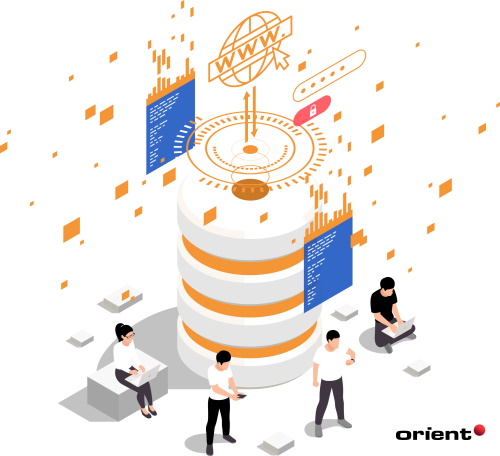
As IoT expands its reach to more industries, the demand for IoT data analytics roughly increases accordingly. A lot of companies are on their way to IoT adoption, but not all of them know how to implement it properly. What is the best way to implement IoT analytics within an organization so that it can be done efficiently? To help you better imagine the procedure of IoT analytics implementation within an organization, we will lead you through some best practices that can result in a smooth and effective process.
- Determine The Use Cases: The first and foremost thing to do is to identify the specific use cases in which your organization can benefit from IoT data analytics. Once you have a clear understanding of your needs, you will be able to decide the appropriate approach and select the right IoT data analytics platform for your organization.
- Data Collection: The next step is to set up a system for collecting raw data from various sources. This can be done by setting up and installing IoT sensors and other devices that can collect data about the different aspects of your business operations. In this stage, companies are often advised to leverage automation for data cleaning, as it can help to remove any invalid or incomplete data points and make the data more accurate and reliable.
- Data Storage: After data has been collected, it is significant to store data in central data centers so that it can be accessed and analyzed when needed effortlessly. This can be done by using a cloud-based data storage platform.
- Data Visualization: Whether it is structured, unstructured, or semi-structured data, it needs to be visualized to make it easier and more comprehensive to understand and interpret later. At this point, you can make use of various data visualization tools to gain insights into your data.
- Data Analysis: This is the core step of the entire process, in which data is analyzed to extract valuable insights. This can be done by using different types of data analytics tools and techniques. This can be done by using various data analysis methods such as machine learning, predictive analytics, and statistical analysis.
IoT data analytics has been traveling so far since its inception, and it has become an integral part of many businesses. If you would like to make the most of your data assets and empower your business decisions, then it is time to embrace IoT data analytics. IoT data analytics can help businesses in a number of ways as long as you know how to do it right.

